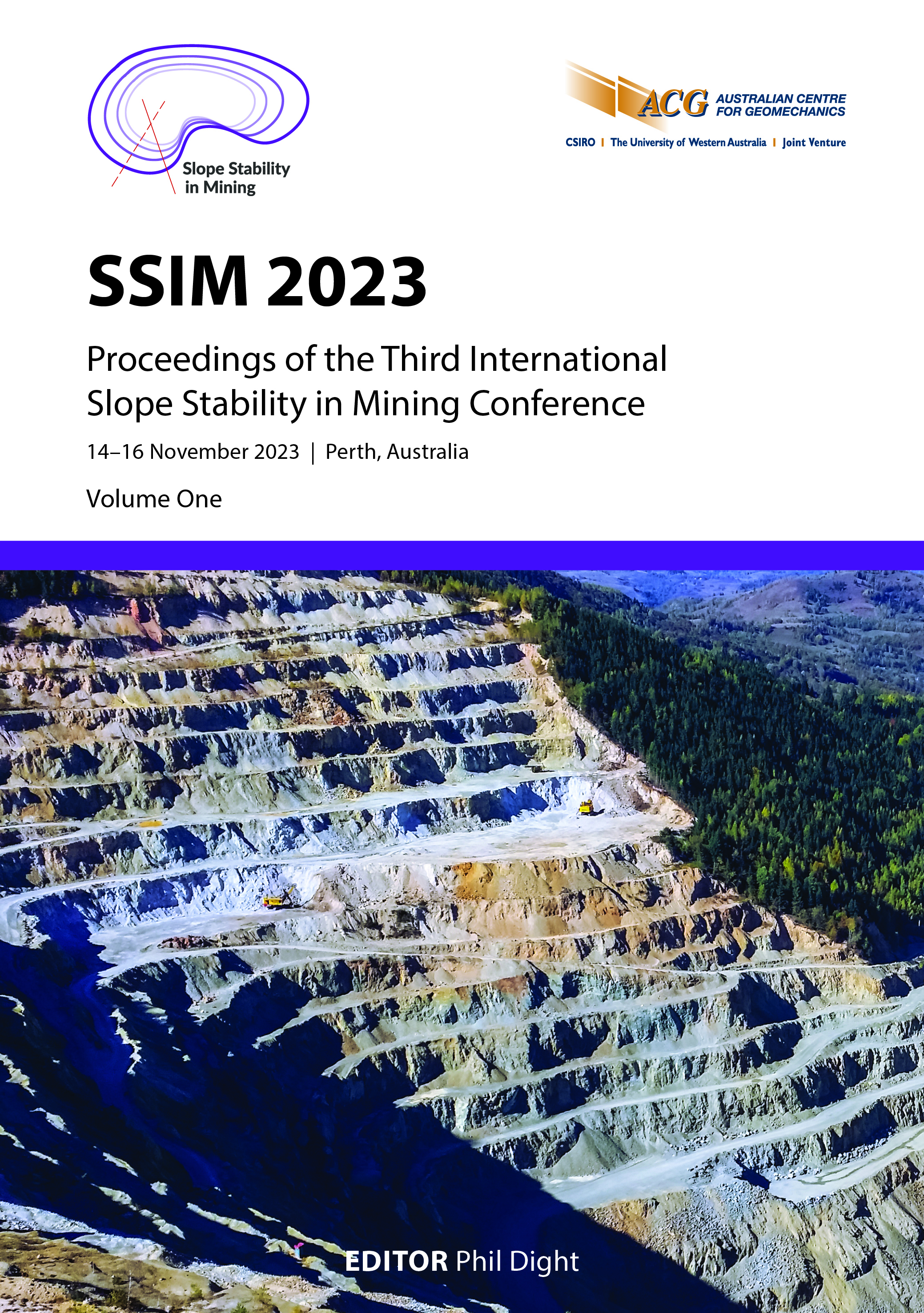Getting more out of drillhole televiewer data: geotechnical toolbox edition

|
Authors: Danielson, J; Clayton, MA; Kelly, L; Kinakin, D |
DOI https://doi.org/10.36487/ACG_repo/2335_26
Cite As:
Danielson, J, Clayton, MA, Kelly, L & Kinakin, D 2023, 'Getting more out of drillhole televiewer data: geotechnical toolbox edition', in PM Dight (ed.), SSIM 2023: Third International Slope Stability in Mining Conference, Australian Centre for Geomechanics, Perth, pp. 421-434, https://doi.org/10.36487/ACG_repo/2335_26
Abstract:
This paper presents three case studies that utilise acoustic televiewer (ATV) survey data to improve the quality and consistency of geomechanical parameters including intact rock strength, joint condition, fracture spacing and rock mass quality. Two methods of leveraging televiewer data for geomechanical characterisation are explored. The first method employs scripted generation of downhole plots which compare average acoustic amplitude and travel time against logged strength and joint condition. The second is a preliminary automated structure identification workflow built on a state-of-the-art computer vision model (YOLOv8) trained to identify open discontinuities. Rock quality designation (RQD) and fracture count are estimated from the model outputs. Case study 1 illustrates an example of how these automated tools can be used to assist in maintaining data quality and consistency across large teams. It highlights the close correlation between acoustic amplitude and logged strength grade, and between travel time and joint condition, and demonstrates how these relationships can be used to identify logging errors and areas of improvement for individual loggers. Case 2 describes a multi-year drilling program where ATV data were used to improve confidence in logged strengths across weathering horizons and demonstrates a particularly strong relationship between acoustic amplitude and Leeb hardness. Case 3 evaluates the performance of the automated structure identification workflow when used for estimating RQD and fracture count, highlighting the tool’s strengths and limitations. These cases demonstrate ATV data’s significant potential for improving the consistency and quality of geotechnical characterisation.
Keywords: televiewer data, rock mass characterisation, quality assurance, artificial intelligence
References:
Alzubaidi, F, Mostaghimi, P, Si, G, Swietojanski, P & Armstrong, RT 2022a, ‘Automated rock quality designation using convolutional neural networks’, Rock Mechanics and Rock Engineering, vol. 55, no. 6, pp. 3719–3734, .
Alzubaidi, F, Makuluni, P, Clark, SR, Lie, JE, Mostaghimi, P & Armstrong, RT 2022b, ‘Automatic fracture detection and characterization from unwrapped drill-core images using mask R–CNN’, Journal of Petroleum Science and Engineering, vol. 208, Part C,
Alzubaidi, F, Nalinakumar, H, Clark, SR, Lie, JE, Mostaghimi, P & Armstrong, RT 2023, ‘Improved fracture segmentation from unwrapped drill-core images using an innovative two-stage segmentation approach’, Mathematical Geosciences, .
Bieniawski, ZT 1976, ‘Rock mass classification in rock engineering’, Symposium Proceedings of Exploration for Rock Engineering, pp. 92–106.
Bu, Y, Song, W, Wang, M & He, Y 2011, ‘The improvement of cementation quality rating method based on compressive strength for low density cement system’, Procedia Engineering, vol. 18, pp. 289–294,
Dempers, G, Nguyen, T & Seymour, C 2019, ‘Advanced methodology for geotechnical televiewer interpretation’, Civil Engineering, vol. 27, no. 3.
Gu, W, Bai, S & Kong, L 2022, ‘A review on 2D instance segmentation based on deep neural networks’, Image and Vision Computing, vol. 120,
Jocher, G, Chaurasia, A & Qiu, J 2023, YOLO, version 8.0.0, computer software, Ultralytics, https://github.com/ultralytics/ultralytics
Kao, HC, Chou, PY & Lo, HC 2020, ‘An innovative application of borehole acoustic image and amplitude logs for geotechnical site investigation’, Acta Geophys, vol. 68, pp. 1821–1832, .
Marinos, P & Hoek, E 2000, ‘GSI: A geologically friendly tool for rock mass strength estimation’,GeoEng 2000, International Society for Rock Mechanics, pp. 1422–1442.
Seguin, K, Kinakin, D & Corkum, A 2022, ‘2022 database update – UCS-Leeb hardness correlation’, paper presented at RockEng22: 22nd Canadian Rock Mechanics Symposium, Kingston, 9–10 August 2022.
Zemanek, J, Glenn, EE, Norton, LJ & Caldwell, RL 1970, ‘Formation evaluation by inspection with the borehole televiewer’, Geophysics, vol. 35, no. 2, pp. 254–269.
© Copyright 2026, Australian Centre for Geomechanics (ACG), The University of Western Australia. All rights reserved.
View copyright/legal information
Please direct any queries or error reports to repository-acg@uwa.edu.au
View copyright/legal information
Please direct any queries or error reports to repository-acg@uwa.edu.au

